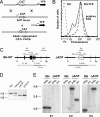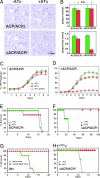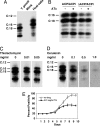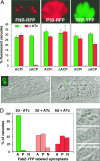Apicoplast fatty acid synthesis is essential for organelle biogenesis and parasite survival in Toxoplasma gondii
- PMID: 16920791
- PMCID: PMC1559775
- DOI: 10.1073/pnas.0603391103
Apicoplast fatty acid synthesis is essential for organelle biogenesis and parasite survival in Toxoplasma gondii
Abstract
Apicomplexan parasites are the cause of numerous important human diseases including malaria and AIDS-associated opportunistic infections. Drug treatment for these diseases is not satisfactory and is threatened by resistance. The discovery of the apicoplast, a chloroplast-like organelle, presents drug targets unique to these parasites. The apicoplast-localized fatty acid synthesis (FAS II) pathway, a metabolic process fundamentally divergent from the analogous FAS I pathway in humans, represents one such target. However, the specific biological roles of apicoplast FAS II remain elusive. Furthermore, the parasite genome encodes additional and potentially redundant pathways for the synthesis of fatty acids. We have constructed a conditional null mutant of acyl carrier protein, a central component of the FAS II pathway in Toxoplasma gondii. Loss of FAS II severely compromises parasite growth in culture. We show FAS II to be required for the activation of pyruvate dehydrogenase, an important source of the metabolic precursor acetyl-CoA. Interestingly, acyl carrier protein knockout also leads to defects in apicoplast biogenesis and a consequent loss of the organelle. Most importantly, in vivo knockdown of apicoplast FAS II in a mouse model results in cure from a lethal challenge infection. In conclusion, our study demonstrates a direct link between apicoplast FAS II functions and parasite survival and pathogenesis. Our genetic model also offers a platform to dissect the integration of the apicoplast into parasite metabolism, especially its postulated interaction with the mitochondrion.
Conflict of interest statement
Conflict of interest statement: No conflicts declared.
Figures






References
-
- Kohler S., Delwiche C. F., Denny P. W., Tilney L. G., Webster P., Wilson R. J., Palmer J. D., Roos D. S. Science. 1997;275:1485–1489. - PubMed
-
- McFadden G. I., Reith M. E., Munholland J., Lang-Unnasch N. Nature. 1996;381:482. - PubMed
-
- Ralph S. A., Van Dooren G. G., Waller R. F., Crawford M. J., Fraunholz M. J., Foth B. J., Tonkin C. J., Roos D. S., McFadden G. I. Nat. Rev. Microbiol. 2004;2:203–216. - PubMed
-
- McFadden G. I., Roos D. S. Trends Microbiol. 1999;7:328–333. - PubMed
Publication types
MeSH terms
Substances
Grants and funding
LinkOut - more resources
Full Text Sources
Other Literature Sources
Research Materials
Miscellaneous

